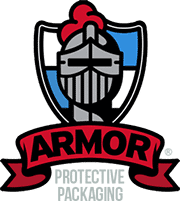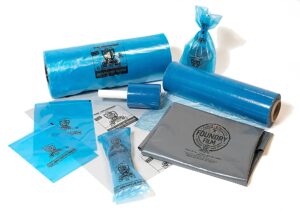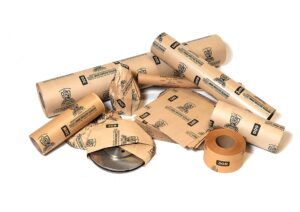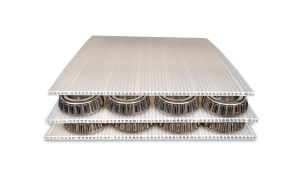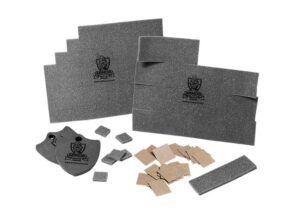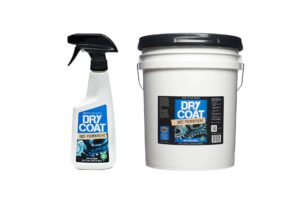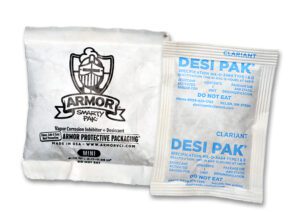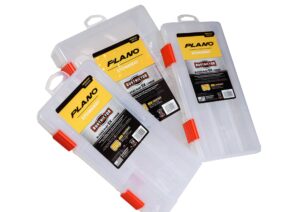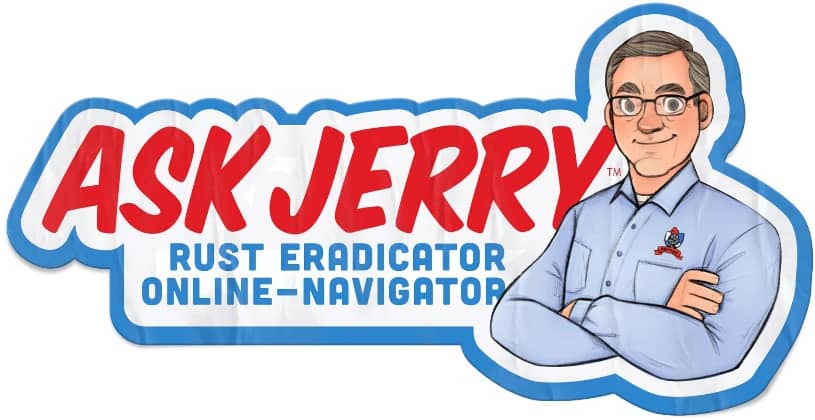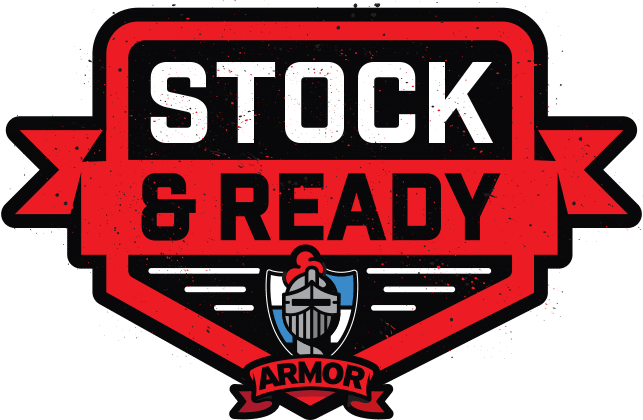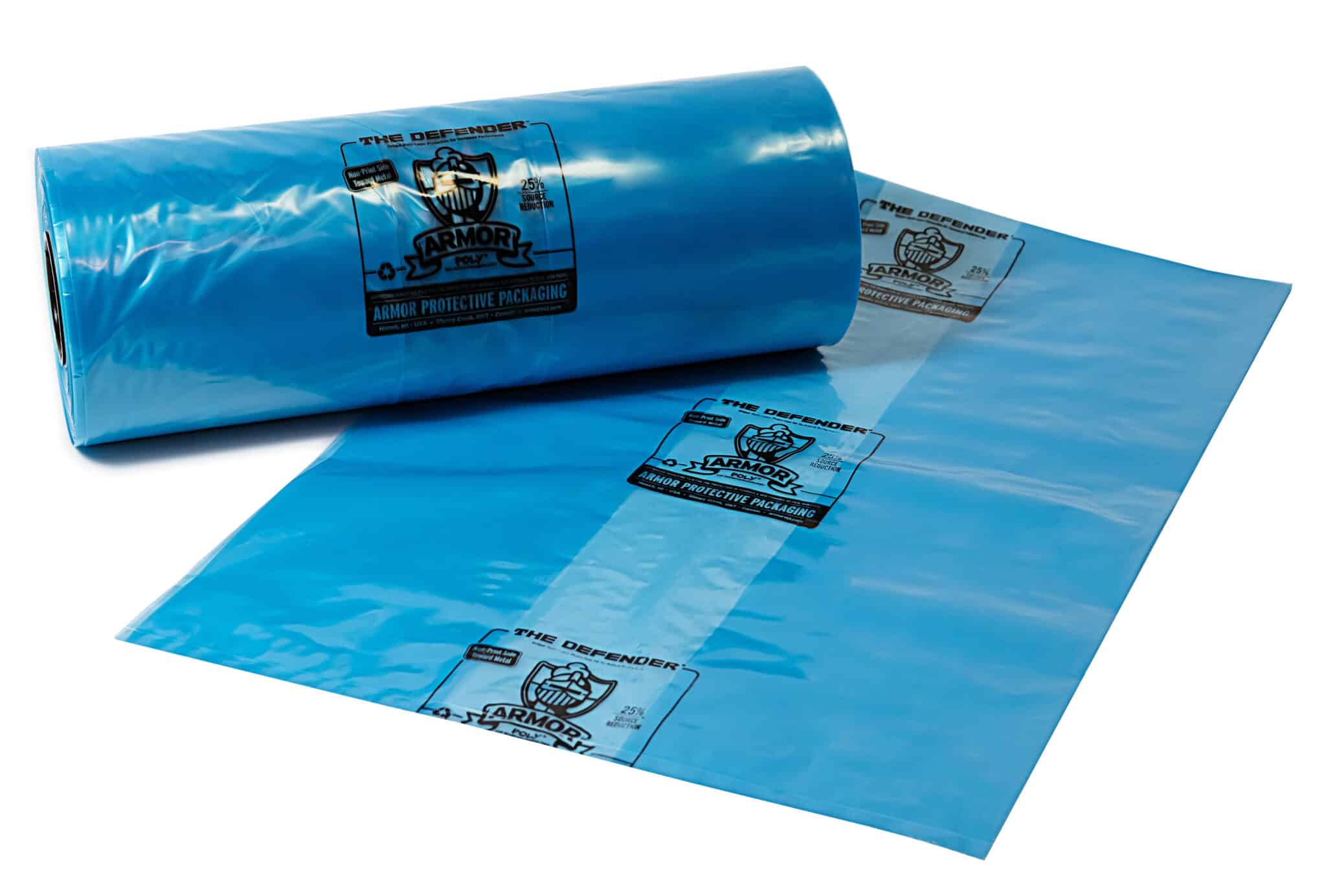Invisible protection, visible results in industrial quantities to prevent rust and take the work out of your workday
Armor Protective Packaging is an industry leader in solving rust prevention problems for large, commercial companies for more than 35 years. Our rust prevention products are safe enough for use in garages and home workshops but also an ideal rust prevention option for company’s working to prevent rust in their production plants, storage facilities or when shipping.
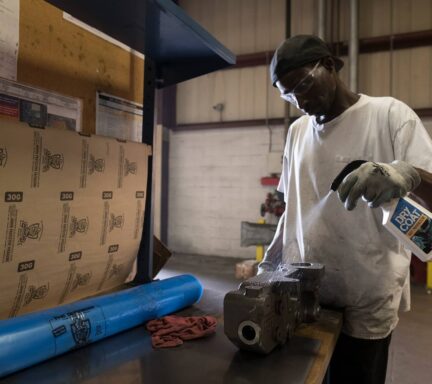
EXPLORE OUR RUST PREVENTION CATEGORIES
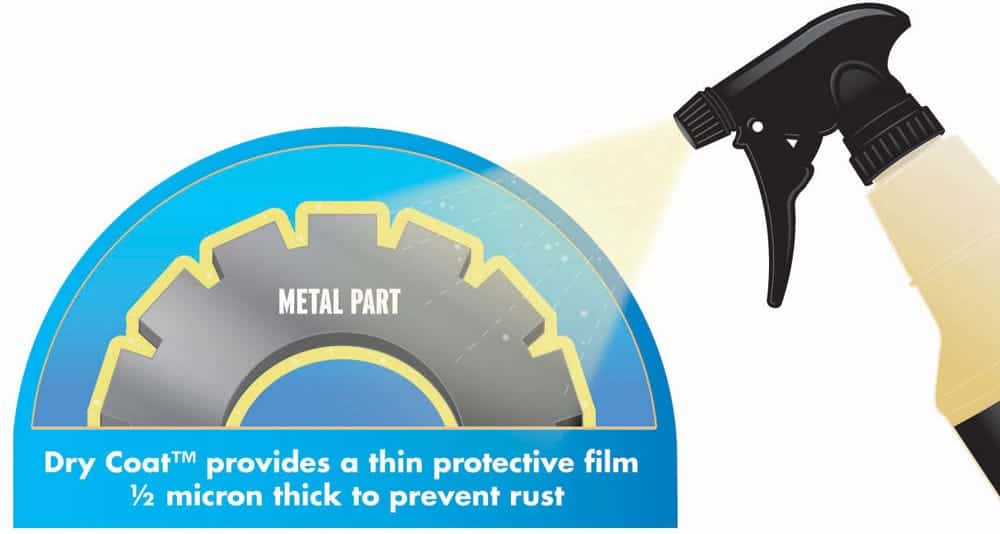
Dry Coat Rust Preventative is ideal for industrial use
Take your commercial rust prevention process and turn it on its ear with Dry Coat and its water-based formula.
Say goodbye to traditional rust prevention methods such as messy oils/waxy coatings or solvent-based rust preventatives because Dry Coat is different–it is non-hazardous, non-sticky, non-tacky, and mess-free!
Dry Coat is designed for use on all ferrous metals and upon drying, it leaves a protective rust preventative coating that displaces water and oil from metal surfaces and is easy to remove if needed. In addition, it does not interfere with advanced processing such as stamping, grinding, cutting, or welding. Dry Coat will protect metal parts stored indoors for up to one year; protection can be extended when combined with other rust preventative products offered exclusively through ARMOR.
Prevent rust on metal parts during in-process manufacturing, storage, or shipping
Check out the list of Dry Coat’s features–they will prove invaluable to your company’s rust prevention efforts.
- Clean, safe, easy water-based rust preventative
- Protects metal from rust for one year of indoor storage
- Simple application–spray, dip, or flow coat
- Dries to the touch and keeps metal clean and free from dirt/dust
- Formulation is non-hazardous–safe for employees and the environment
- Displaces water and oil from metal surfaces
- Ready to use and is VOC free
- Eliminates sticky, messy liquids to manage or clean up
- Replaces hazardous oils, flammable solvents, sticky RPs
- Removes easily, if needed, with mild detergents or cleaners
“Wash Your Hands” of Dangerous Solvents and Messy Oil-based Rust Prevention
Dry Coat will transform your company’s rust prevention methods and it will be cleaner, safer, easier:
- It will increase your worksite safety and cleanliness by replacing messy and caustic oils and wax coatings
- Protect your employees/co-workers from exposure to toxic, flammable and heavy-vapors of solvent-based rust preventatives
- Reduce labor by eliminating time-intensive, by-hand application required by oils and waxes
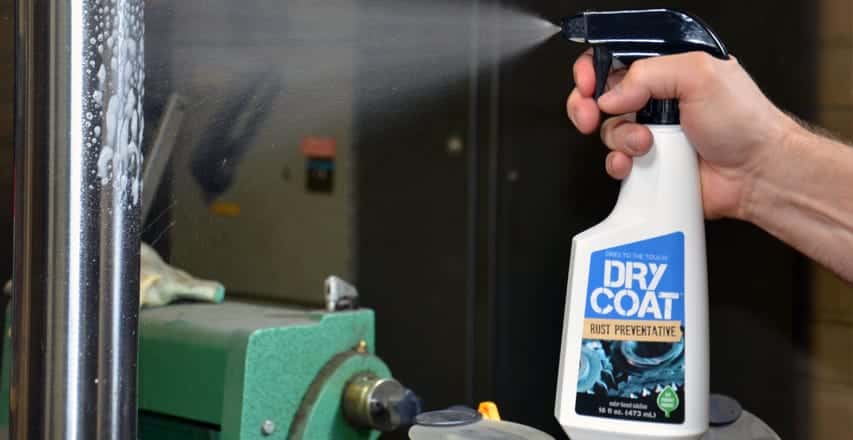
FAQs
Dry Coat Rust Preventative is a water-based rust preventative liquid for ferrous metals (such as steel and iron). It is easily applied using spray or dip and upon drying Dry Coat leaves a clear, protective coating that protects against rust and corrosion. Dry Coat will dry-to-touch within 30 minutes at ambient condition and it does not attract dirt or dust on metal parts such as other sticky or tacky products. It is non-hazardous and easily washes off using mild detergents or common metal cleaning solutions. Dry Coat is safe to use on stainless steel and chrome and will not harm most elastomers or plastics. Dry Coat protects for up to one year for items stored indoors.
Dry Coat prevents rust from forming on ferrous metals in two ways.
#1. Once Dry Coat is physically applied, it adheres to the surface of the metal leaving a protective film. Upon drying, Dry Coat forms a hydrophobic layer that provides a barrier to water and other rust-causing substances.
#2. One component of the Dry Coat formula is Vapor Corrosion Inhibitors (VCI), a class of rust-preventing compounds that release molecules from the compound into the air. The VCI molecules attach themselves to the metal’s surface to form an invisible, thin film that works to protect metal from rust. If metal parts are kept enclosed during storage (e.g. using a bag, box, storage tub), the VCI vapor is kept contained and able to attach to any non-coated metal surface.
- A superb and safe water-based rust preventative
- Dries to the touch – no sticky, messy liquids to clean up
- Keeps metal parts clean and free from corrosion
- Displaces water and oil from metal surfaces
- Saves time and money compared to other messy rust preventative methods
- Replaces hazardous oils, flammable solvents and sticky rust preventatives
- Formulation is non-hazardous, non-flammable and environmentally friendly
- Ready to use and VOC free
- If necessary, can be removed easily with mild detergents or cleaners
In the commercial setting, Dry Coat can be applied via:
- Non-atomizing Spray
- Dip
- Flowcoat
If using spray application, entire surface of metal must be covered. If applying via dip or submersion, allow excess Dry Coat to drain or “flow off” of metal part leaving the correct amount of Dry Coat on the metal surface. While it is always best to use Dry Coat on a clean, metal surface to ensure the optimal rust prevention protection, it is not a requirement for product to work.
In simplest terms, Dry Coat will protect metal items stored indoors for one year. The effective time of Dry Coat’s protection can be impacted by the degree of exposure to ambient conditions (such as the humidity level, temperature, and air-flow as well as temperature cycles of condensation or evaporation). Dry Coat’s protection can be extended when metal parts are enclosed in storage or when combined with other ARMOR products.
Dry time depends on ambient conditions such as temperature, humidity and airflow. When conditions are ideal, dry time is approximately 30 minutes. If needed, the use of a fan on a low setting or low heat from an industrial oven or heated blower (recommended temperature and exposure limit for Dry Coat is 180˚ F (82˚ C) are suggested options to help to accelerate the drying process.
Proper storage temperatures for Dry Coat are between 40°F and 140°F. Once applied and dry, Dry Coat will withstand temperatures up to 300°F for short durations (30 minutes or less). For longer durations, a maximum temperature of 180°F is recommended.
Dry Coat was designed to dry-to-the-touch, however, dry time is directly affected by how fast the water portion of Dry Coat’s water-based formula is able to evaporate into the air. The more humid the conditions the longer this will take. Dry time depends on ambient conditions such as temperature, humidity and airflow. When conditions are ideal, dry time is approximately 30 minutes. If needed, the use of a fan on a low setting or heat via an industrial oven or blower (recommended temperature and exposure limit for Dry Coat is 180˚F (82˚ C) are suggested options to help to accelerate the drying process.
Dry Coat provides a protective coating that is approx. 0.5–0.8 microns, or 0.02–0.03 mils thick. For comparison a human hair is 40-50 microns or a piece of photocopy paper is approximately 80 microns thick.
Dry Coat offers two forms of rust protection to help eliminate the need for concern as to whether your application method was precise in covering the entire metal part. The first is the physical barrier provided through the application of Dry Coat to the metal’s surface. The second is the release of a Vapor Corrosion Inhibitor (VCI) that is a component of the Dry Coat formula.When your Dry Coat-covered metal part is stored inside a container (bag, box, storage tub), the VCI vapor that is a part of the chemistry of Dry Coat will attach to any metal surface that wasn’t physically covered and form an invisible, thin film to protect metal from rust. This combination of the physical coating on the metal’s surface and the VCI chemistry that works in vapor offer peace of mind that your metal part is protected.
It depends–depletion of active ingredients, contamination and bacteria growth would be the major concerns. Depletion and contamination causing corrosion issues can be determined by the ARMOR ASTM D4627 modified chip test. This test could be performed at the end of a shift and read the next day to determine if the Dry Coat is still performing as desired. The results could be used to set a scheduled cleaning routine and once that is determined, you would not have to perform this chip test as often. Bacteria/mold growth can be determined by standard BioSticks or any other dip bacteria test indicator. Follow guidelines on test packaging to determine ranges that meet your needs
Excessive blowing could remove the Dry Coat from the metal’s surface–only use the minimum necessary to achieve desired results.
Dry Coat dries to a tack-free finish that is clear and nearly undetectable and it will not interfere with advanced processing such as stamping, grinding, cutting, welding, or burnishing. It does not require removal before the part is placed in service. Dry Coat will be easily removed with standard industrial pre-treatments or common metal cleaning solutions.
Do you have industrial rust prevention questions?
Armor Protective Packaging can solve your industrial rust removal problems and take the work out of your workday.
